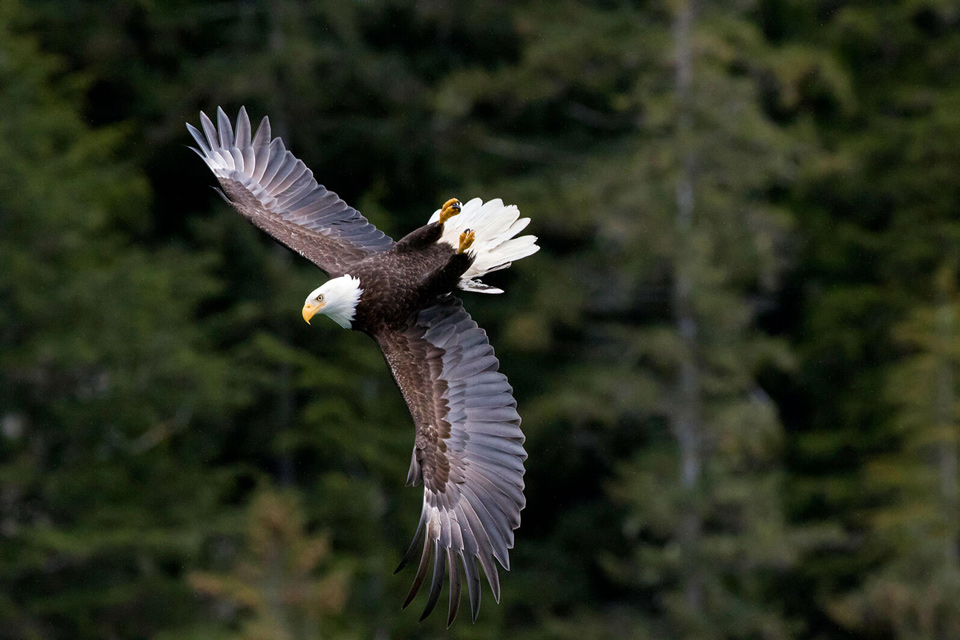
Bald Eagle. Photo: Howard Arndt/Audubon Photography Awards
The agency's final action ignores public input and disregards importance of old-growth trees for local communities, fish, and birds.
October 29, 2020 - TONGASS NATIONAL FOREST, ALASKA — “The Roadless Rule was one of the best protections for a climate resilient forest ecosystem—important for birds, fish, and people, now and into the future,” said Natalie Dawson, executive director, Audubon Alaska. “Removing these protections is short-sited and irresponsible. And the entire process was done without consultation with local Tribes who rely on and have stewarded this land for time immemorial.”
The U.S. Forest Service released its final rule and record of decision yesterday, which rolls back long-standing “Roadless Rule” protections for the Tongass National Forest in Southeast Alaska, the country’s largest national forest. The decision includes significant fragmentation of roadless areas within the Tongass, and puts fish, birds, and other wildlife that live within these intact remnants of the forest at risk.
Alaska residents have repeatedly spoken out against the removal of the Roadless Rule on the Tongass and their concerns are echoed by more than 1.5 million Americans who submitted comments during the original rulemaking process. 11 Tribal governments in the region submitted a petition to the Forest Service requesting the protection of traditional lands for the Tlingit, Haida and Tsimshian Peoples, including a new rulemaking process done in collaboration with the Tribes of Southeast Alaska.
Polling has revealed that 61 percent of voters nationwide oppose exempting large parts of the Tongass from the Roadless Rule, and 96 percent of these voters said they believe it is important for the federal government to protect and conserve national forests.
About Audubon
The National Audubon Society protects birds and the places they need, today and tomorrow. Audubon works throughout the Americas using science, advocacy, education, and on-the-ground conservation. State programs, nature centers, chapters, and partners give Audubon an unparalleled wingspan that reaches millions of people each year to inform, inspire, and unite diverse communities in conservation action. A nonprofit conservation organization since 1905, Audubon believes in a world in which people and wildlife thrive. Learn more at www.audubon.org and on Facebook, Twitter and Instagram @audubonsociety.
Since 1977, Audubon Alaska has been conserving the spectacular natural ecosystems of Alaska for people, birds, and other wildlife. Audubon Alaska uses science to identify conservation priorities and support conservation actions and policies, with an emphasis on public lands and waters. Audubon Alaska is a state office of the National Audubon Society. Learn more at ak.audubon.org.
Source: National Audubon Society
